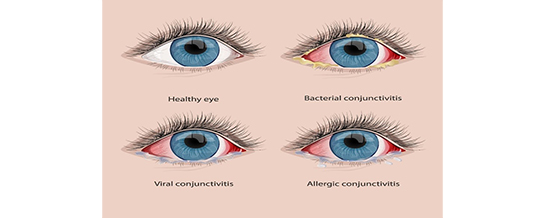How to Care for Your Child with a Conjunctivitis
This leaflet will provide you with information about conjunctivitis causes, symptoms, diagnosis, treatment and home care advice.

What is Conjunctivitis?
- The conjunctiva is the thin layer that lines the inner surface of the eyelids and the whites of the eyes (called the sclera)
- Conjunctivitis – sometimes called ‘pink eye’ - is an inflammation (swelling and redness) of the conjunctiva.
- It is a common eye infection in children under five years of age.
What are the Causes of Conjunctivitis?
Causes of Conjunctivitis could be:
- Nonspecific causes like foreign body, dryness or chemical splash in the eye
- Allergy- this is not contagious and cannot be transmitted to other people
- Infections – either bacterial or viral infection and is highly contagious and can be transmitted to other people. A child with infectious Conjunctivitis will remain contagious as long as there is a discharge from their eye.
What are the symptoms of Conjunctivitis?
Symptoms of Conjunctivitis may include:
- Pain and uncomfortable feeling
- Itching of the eye
- Redness or pink eye
- Yellow or green discharge from the eye
- Increased tear production
- Swelling of the eyelid
- Sensitivity to bright light
Symptoms usually start within 24 to 72 hours of contact with the infectious agent and can last from two days to three weeks.
How is Conjunctivitis diagnosed?
The doctor will ask a few questions about your child’s health and examine your child.
Your doctor will decide if further investigation or blood tests are required. In most cases, no specific tests are required
How is Conjunctivitis treated?
The treatment of Conjunctivitis depends on the cause
- Viral Conjunctivitis:
- Topical antihistamine/decongestant eye drop may help to relieve the irritation.
- The irritation and discharge may get worse for three to five days before getting better
- Symptoms can continue for two to three weeks.
- Bacterial Conjunctivitis:
- antibiotic eye drops or ointment.
- Vision may be blurred for up to 20 minutes after the use of ointment.
- Nonspecific Conjunctivitis:
- Usually resolves within a few days without any treatment
- Allergic Conjunctivitis: using some measures can help in allergic Conjunctivitis
- Avoid rubbing the eyes. If itching is bothering your child, use artificial tears, a cool compress, or antihistamine eye drops.
- Minimize your child’s exposure to pollen by staying inside when possible
- Topical antihistamine/decongestant eye drop may help
How to care for your child at home?
- Clean the eyes gently with cotton balls soaked in warm water. This may help your child feel better.
- Clean in one direction only, outwards from the inside (nose side) of the eye. This help prevents the other eye from becoming infected if only one eye is affected.
- Discard the cotton ball each time to prevent recontamination.
- Do not try to clean inside the eyelids as this may cause damage to the conjunctiva.
- Do not allow your child to share eye drops, tissues, towels, or pillowcases with others
- Do not use breastmilk to treat Conjunctivitis. Using it on your baby’s eyes will not help.
- Children who wear contact lenses should avoid wearing the lenses until the eye is no longer red. Throw away the contact lens, or the contact lens should be disinfected overnight or replaced (if disposable).
When is it safe for your child to return to school or childcare?
Keep your child at home until the discharge from the eyes has cleared. Most daycare centres and schools require that students receive 24 hours of antibiotic eye drops or ointment before returning to school. Discuss with your child’s school or childcare centre.
When should I seek medical advice?
Seek medical advice if your child:
- Not responding to treatment
- Has eye tenderness or pain increases despite treatment
- Has difficulty in seeing objects clearly
- Has difficulty in keeping the eye open
- Has severe headache and nausea
- Uses contact lenses and developed a red, painful eye

